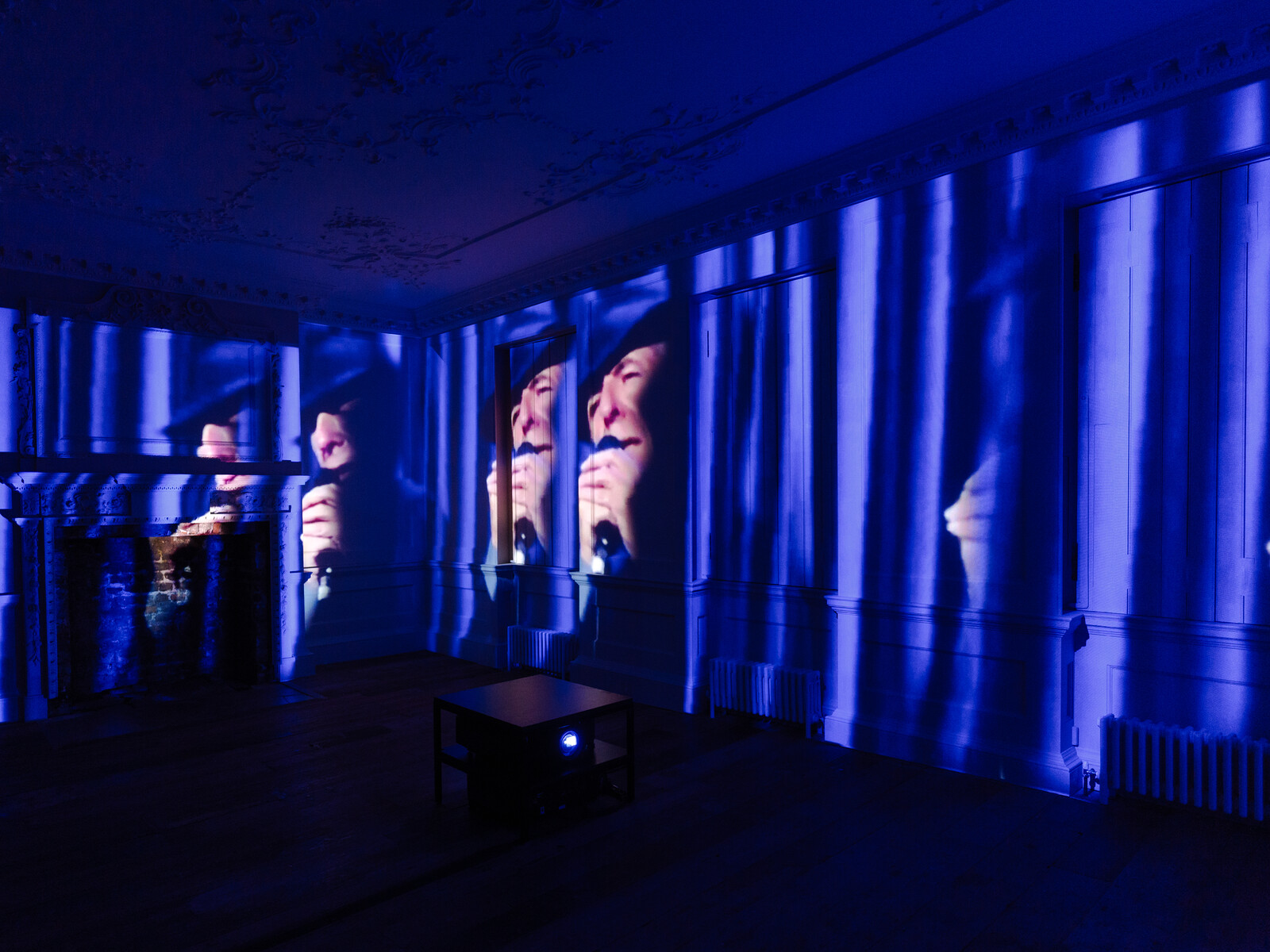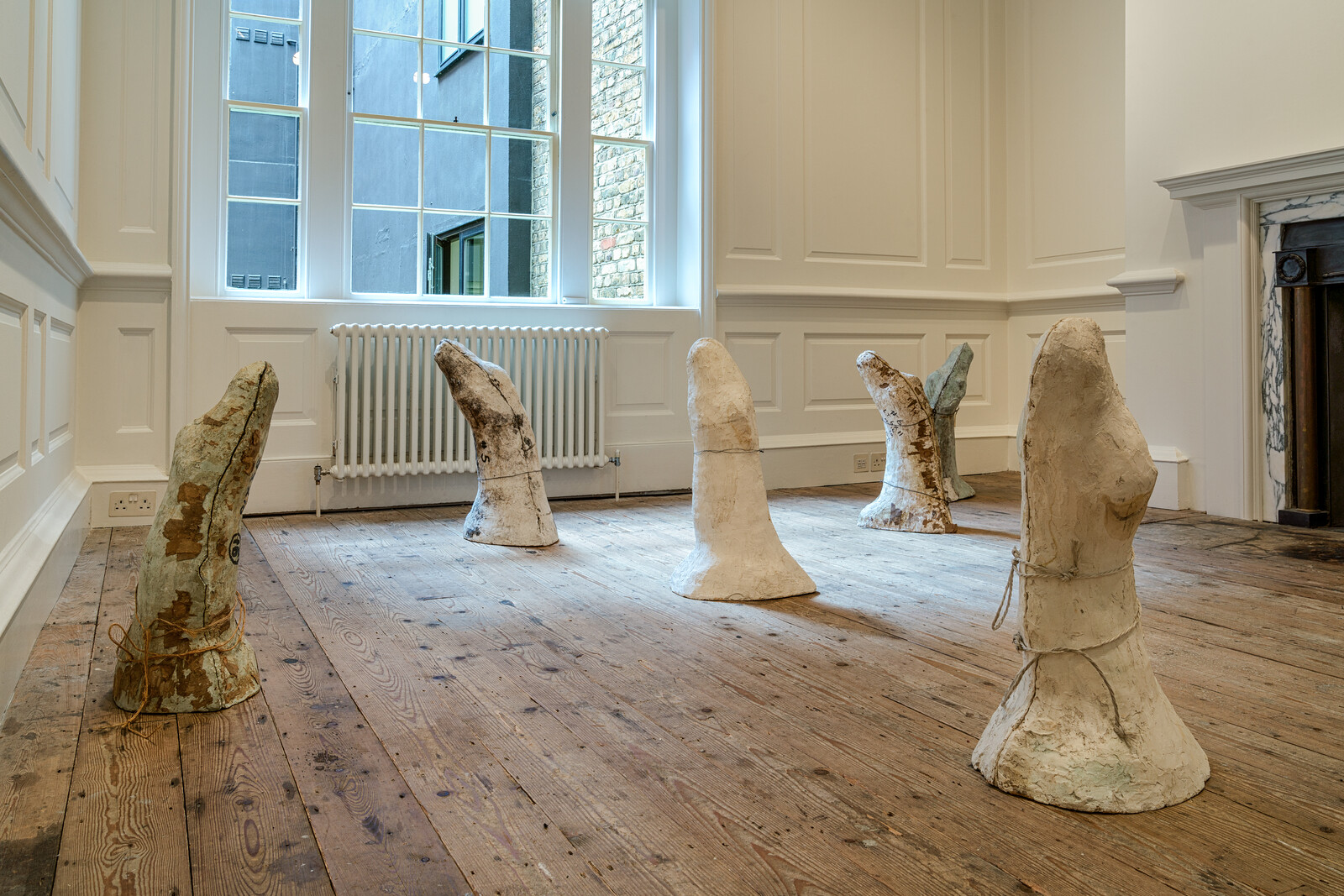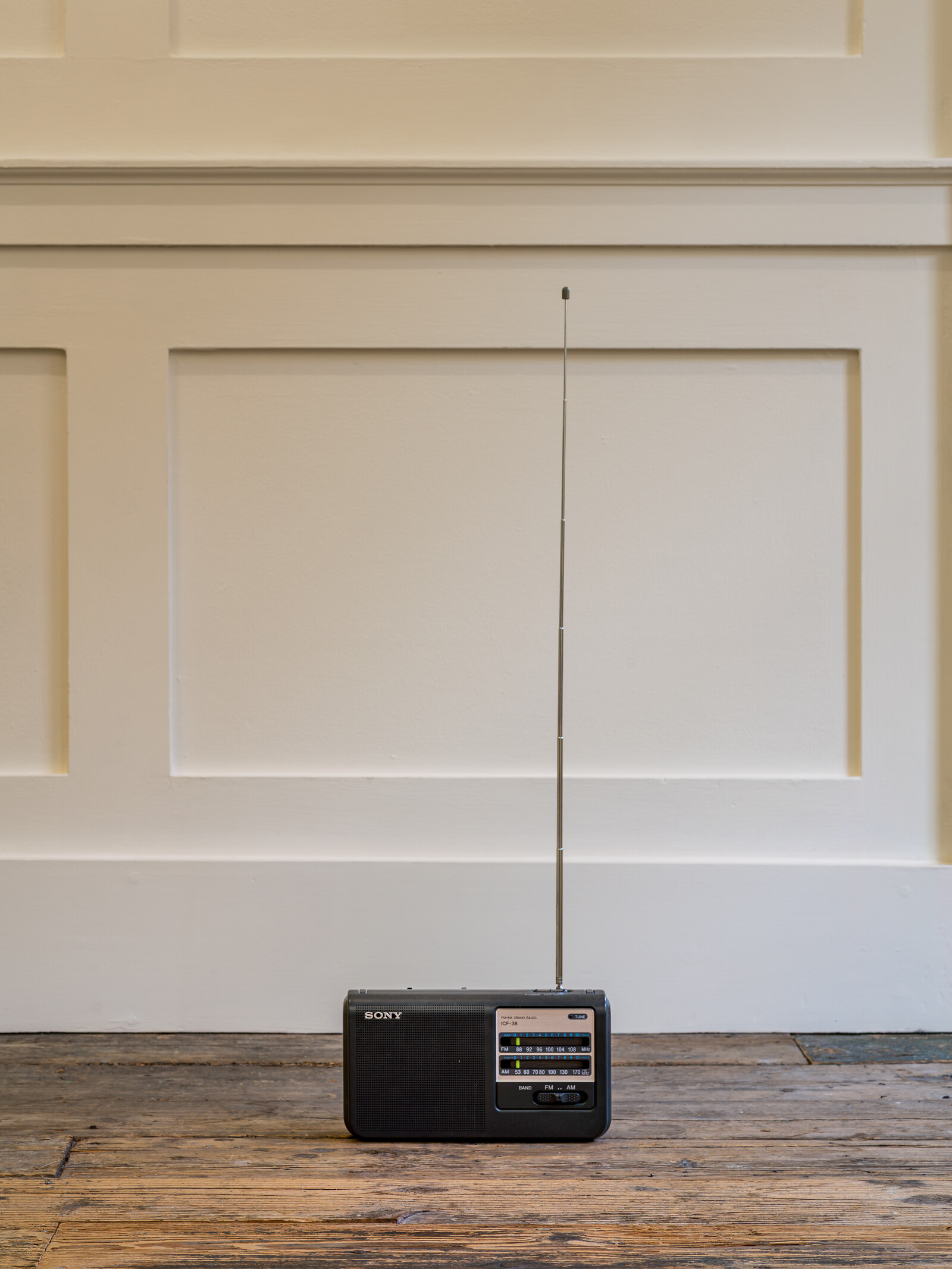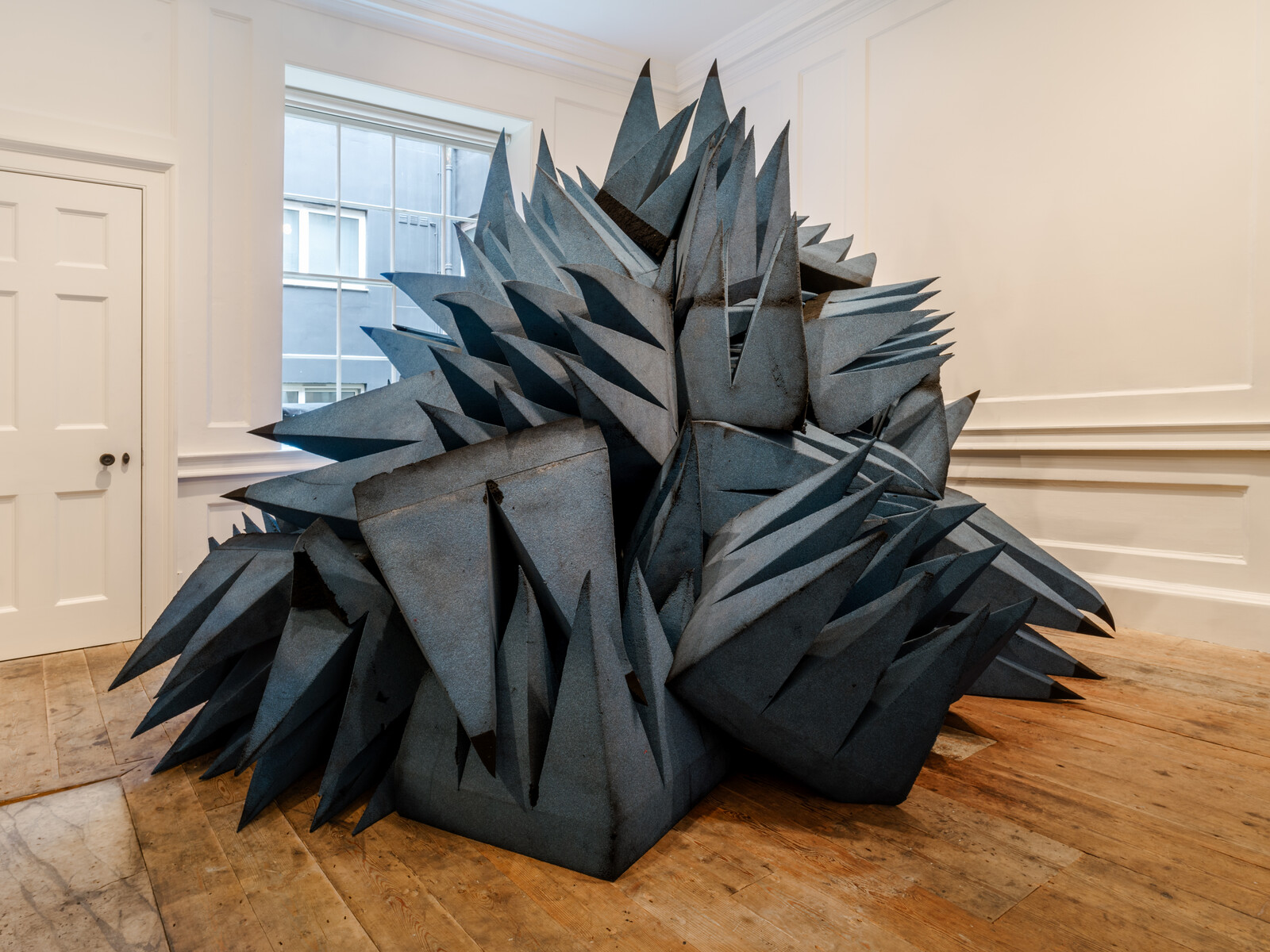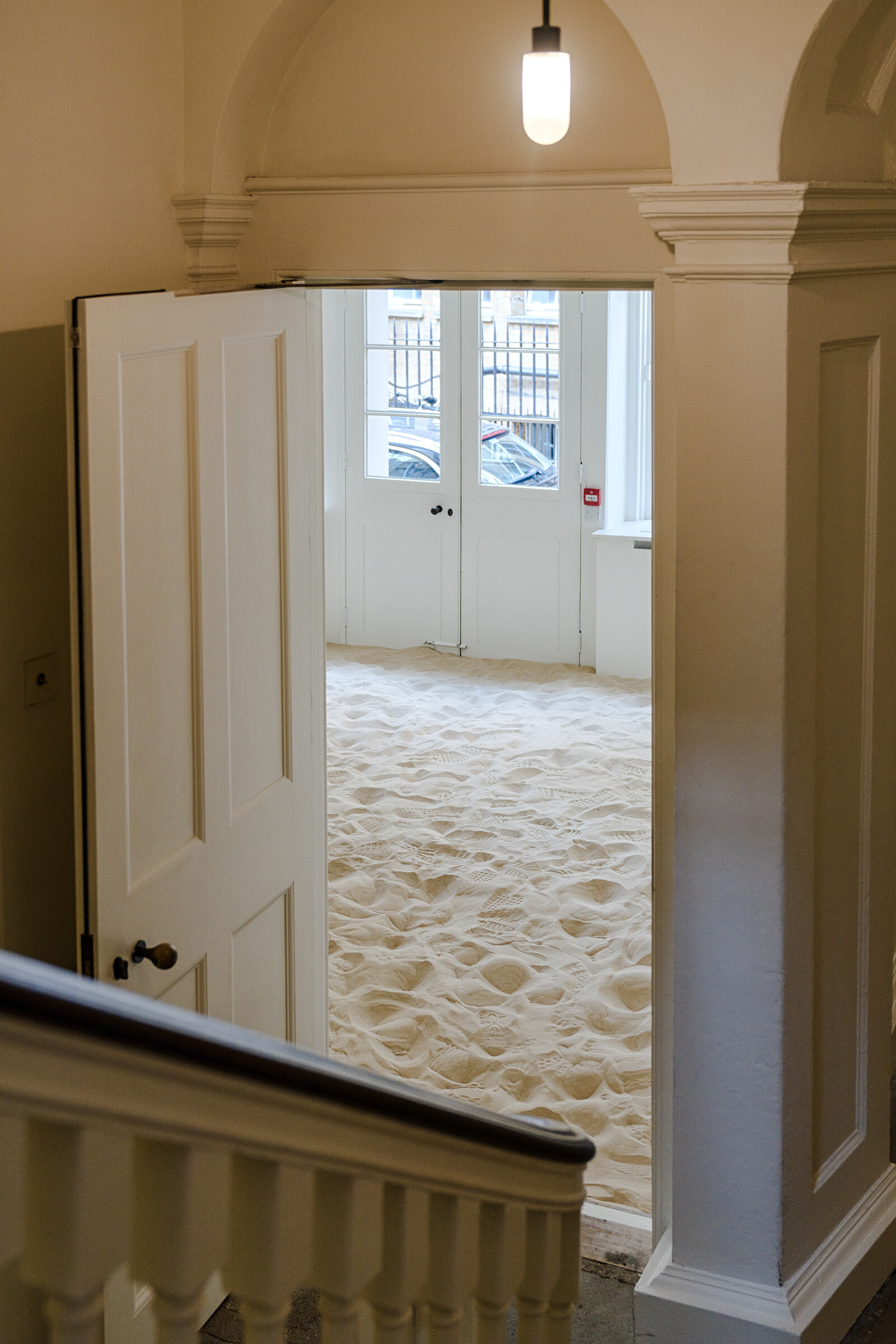The first room of “AYE!” is carpeted with fine sand. Audio from Philip Kaufman’s 1988 film adaptation of The Unbearable Lightness of Being fills the air. “Tomas,” a woman asks between kisses, “what are you thinking?” To which Tomas replies: “I’m thinking how happy I am.” The clip loops—the lovers locked in this tender moment, accompanied by piano music and the thrum of rain and windscreen wipers—and with every repeat becomes more cloying and meaningless. Four television screens in a row to one side emit a white glow which fades each time the loop ends, an electronic sunset on the beach. There is a formal resonance between the artificially uniform texture of the sand, the blank monochrome screens, and the eternally recurring sweet nothings. In these elements—nature, entertainment, love—we seek comfort, but here find them in a state of entropy: metronomic, sterile, vacuous.
A child in red dungarees arrives at the door and points at me. “There’s a big man in the sandpit,” she announces to her father, getting his reassurance before dancing freely across the room. She writes her name in the sand, and in doing so shares something that the pseudonymous Lutz Bacher, who died in 2019, never did.
The combination of emotional and sensory directness with cold conceptualism is typical of the late American’s work—a quality she described as “cornceptual.”1 Bacher’s practice was notoriously varied. Walking up the stairs, I encounter six casts of horse necks, a heap of spiked sound-insulating foam, and an audio-visual installation featuring Leonard Cohen incessantly croaking the word “please.” The pieces are unified by the exhibition’s focus on her engagement with sound—casts of a body part that creates it, a mass of material that absorbs it, and a room full of speakers that make you sick of it—but the relationships between them are obscure.2 The production of one cannot elucidate that of another. Bacher resisted the idea that an artist’s output should progress within a fixed set of parameters.
Her refusal of intellectual clarification makes the viewer attend instead to the subtleties of their visceral experience. No longer an aloof critic observing variations within a coherent oeuvre, I am a body in space encountering a series of challenges. Rather than identifying a cumulative argument across the show, I note the changes of affect from room to room. In PLEASE (LC) (2013–15), the speakers that amplify Cohen’s voice—loud and out-of-sync—push me around in search of respite. His unanswered pleas find material equivalence in the disembodied horse throats which, encrusted with wire, tape, and dirt, are also characterized by strangled helplessness. My own throat tightens, my ears ache, and I wish I could sink into the silent depths of Magic Mountain (2015) next door. The somatic intensity of Bacher’s art is foregrounded by the exhibition’s concern with sound—a medium that resonates through the body, seducing and repelling from one installation to the next. And the gallery’s domestic-scale rooms mean the viewer is forced to interact closely with the work, squeezed through tight spaces and into corners, so becomes hyperaware of their physical presence. I am “a big man in the sandpit.”
Bacher’s practice is comparable to the appropriation strategies of the Pictures generation, which exposed the ideological constructions of mass media. But its focus is less on stressing the unreality of images than on staging very real interactions between spectators and representations. Take Untitled (Diana) from 1997. A slowed-down, looped snippet of television coverage from Princess Diana’s funeral—her coffin carried down the aisle to organ music and church bells—is projected on the wall of an otherwise empty room. After a few minutes the film, already fuzzy and faltering, disappears in a flash of static.
Unexpectedly, my eye longs for it to return, as if I have, on a physiological level, become addicted to the hypnotic regularity of its repetitions. Interminably prolonging the process of mourning, the work parodies popular culture at its worst: endlessly generating emotion and deferring catharsis, forestalling the development of authentic consciousness. (Now the lights are out things become clear: I am alone, Di is dead, I must move on.) When the projection resumes my relief is tarnished by an awareness of its fragility, its dependence on fallible infrastructures, and in turn my dependence on it. The spectacle emerges as not only the ideological manipulation of the masses but also something more tangible and imperfect, more “cornceptual”: a precarious, intimate relationship between technology and the body.
The phrase, coined by Colin de Land, is used in a conversation between Bacher and Daniel McDonald which appears in Lutz Bacher, Do You Love Me? (New York: Primary Information, 2012), unpaginated.
The idea that Horses (4), (5), (6), (7), (8), (9) (2008) represents “the part of the bodily mechanism that gives birth to voice” is suggested by Anthony Huberman, the curator of “AYE!,” in his excellent exhibition essay, “Songs, Spells and Shipwrecks.”

